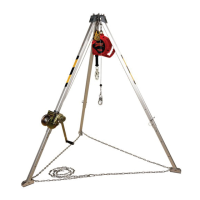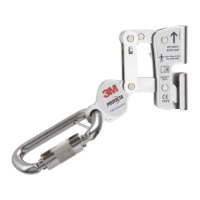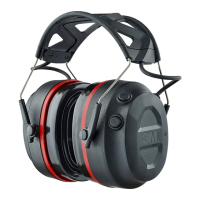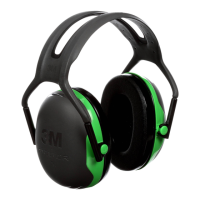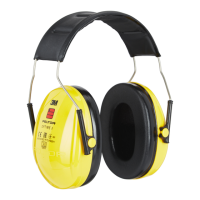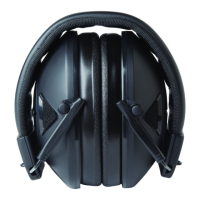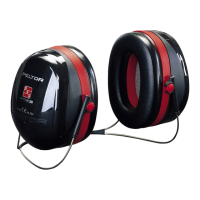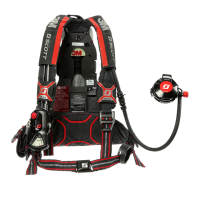9
1.0 PRODUCT APPLICATION
1.1 PURPOSE: Full body harnesses provide users with the means to connect to Fall Protection systems. The attachment
elements of the full body harness serve as connection points for the connecting subsystem, which secures the user
to an anchorage point. Full body harnesses may be used for a variety of Fall Protection systems. System application
is determined by the make of your full body harness and the attachment elements present on your harness. See the
“Product Overview” and Figure 2 for a full list of Fall Protection applications available for your full body harness model.
1.2 STANDARDS: Your product conforms to the national or regional standards identied on the front cover of these
instructions. If this product is resold outside the original country of destination, the re-seller must provide these
instructions in the language of the country in which the product will be used.
;
For more information on certication or conformance requirements, refer to the applicable standards and
regulations listed for your product (e.g. the ANSI/ASSP Z359 Fall Protection codes).
1.3 TRAINING: This equipment must be installed and used by persons trained in its correct application. These instructions
are to be used as part of an employee training program as required by national, regional, or local standards. It is the
responsibility of the users and installers of this equipment to ensure they are familiar with these instructions, trained in
the correct care and use of this equipment, and are aware of the operating characteristics, application limitations, and
consequences of improper use of this equipment.
1.4 RESCUE PLAN: When using this equipment and connecting subsystems, the employer must have a written rescue plan
and the means to implement and communicate that plan to users, authorized persons, and rescuers. A trained, on-
site rescue team is recommended. Team members should be provided with the equipment and techniques necessary
to perform a successful rescue. Training should be provided on a periodic basis to ensure rescuer prociency. Rescuers
should be provided with these instructions. There should be visual contact or means of communication with the person
being rescued at all times during the rescue process.
2.0 SYSTEM REQUIREMENTS
2.1 CAPACITY: The user capacity of a complete Fall Protection system is limited by its lowest-rated maximum capacity
component. For example, if your connecting subsystem has a capacity that is less than your harness, you must comply
with the capacity requirements of your connecting subsystem. See the manufacturer instructions for each component of
your system for capacity requirements.
2.2 CONNECTING SUBSYSTEMS: Connecting subsystems (self-retracting devices, energy-absorbing lanyards, lifeline
subsystems, etc.) must be suitable for your application. Refer to the subsystem manufacturer instructions for additional
information.
2.3 ENVIRONMENTAL HAZARDS: Use of this equipment in areas with environmental hazards may require additional
precautions to prevent injury to the user or damage to the equipment. Hazards may include, but are not limited to: high
heat, chemicals, corrosive environments, high voltage power lines, explosive or toxic gases, moving machinery, sharp
edges, or overhead materials that may fall and contact the user or equipment. Contact 3M Technical Services for further
clarication.
2.4 EXTENDED SUSPENSION: A full body harness should not be used in extended suspension applications. Extended
suspension can cause suspension trauma. If the user is going to be suspended for an extended length of time, it is
recommended that some form of seat support be used. 3M recommends a seat board, suspension work seat, seat sling,
or a boatswain chair. Contact 3M Technical Services for more information.
2.5 COMPONENT COMPATIBILITY: 3M equipment is designed for use with 3M equipment. Use with non-3M equipment
must be approved by a Competent Person. Substitutions made with non-approved equipment may jeopardize equipment
compatibility and may affect the safety and reliability of your Fall Protection system. Read and follow all instructions and
warnings for all equipment prior to use.
2.6 CONNECTOR COMPATIBILITY: Connectors are compatible with connecting elements when the size and shape of either
component does not cause the connector to inadvertently open, regardless of orientation. Connectors must comply with
applicable standards. Connectors must be fully closed and locked during use.
3M Connectors (snap hooks and carabiners) are designed to be used only as specied in each instruction manual. Ensure
connectors are compatible with the system components to which they are connected. Do not use equipment that is non-
compatible. Use of non-compatible components may cause the connector to unintentionally disengage (see Figure 3). If
the connecting element to which a connector attaches is undersized or irregular in shape, a situation could occur where
the connecting element applies a force to the gate of the connector (A). This force could then cause the gate to open (B),
disengaging the connector from the connecting element (C).
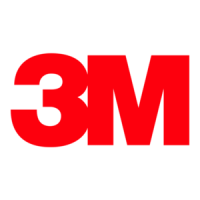
